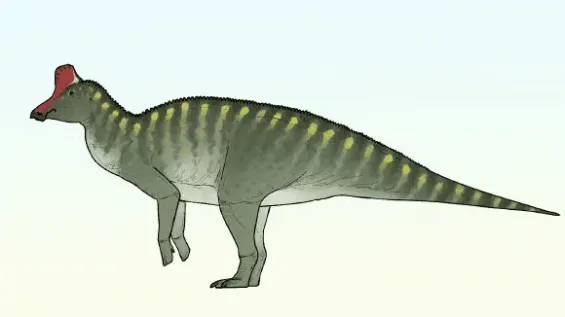A recent paleontological study has added another piece to the puzzle of hadrosaurid dinosaurs, plant-eating dinosaurs famous for their flat, duck-like snouts, in Morocco with the discovery of a new species. This new piece is Taleta taleta, a duckbill dinosaur believed to have lived in what is now Morocco around 66 million years ago.
Two associated jawbones of Taleta taleta were discovered in the Ouled Abdoun Basin, a phosphate sedimentary basin near the city of Khouribga, according to a paper published in Gondwana Research by University of Bath paleontologist Nicholas Longrich and colleagues from Spain, France, and Morocco.
This discovery strengthens the evidence that a group of lambeosaurine hadrosaurids, a subgroup of duckbills characterized by hollow crests, successfully dispersed into North Africa from Europe near the end of the Cretaceous, around 66 million years ago.
Three known lambeosaurine species in Morocco
Morocco is now home to at least three known lambeosaurine species: Ajnabia odysseus, Minqaria bata, and the newly identified Taleta taleta. Their coexistence suggests these dinosaurs underwent significant adaptive radiation, rapid diversification to fill different ecological niches, after arriving in Africa.

Although Taleta belongs to the same family as the two previously discovered lambeosaurine hadrosaurids, some differences emerge. «Taleta, known from two associated maxillae, differs from Ajnabia and Minqaria by several unique features: a dorsally positioned ectopterygoid ridge, a straight tooth row, large obliquely oriented maxillary tooth crowns, and a prominent primary ridge on the maxillary teeth», the researchers explained.
«Remarkably, this specimen cannot be referred to either Ajnabia or Minqaria. Instead, it represents a third genus and species», Longrich emphasized.
The discovery also sheds light on the geological context of the Ouled Abdoun Basin phosphates. «The phosphates of the Ouled Abdoun Basin consist of a series of phosphatic sands, marls, and limestones deposited in a shallow marine environment at a time when the North Atlantic extended inland, covering much of present-day Morocco», the researchers concluded.





 chargement...
chargement...















